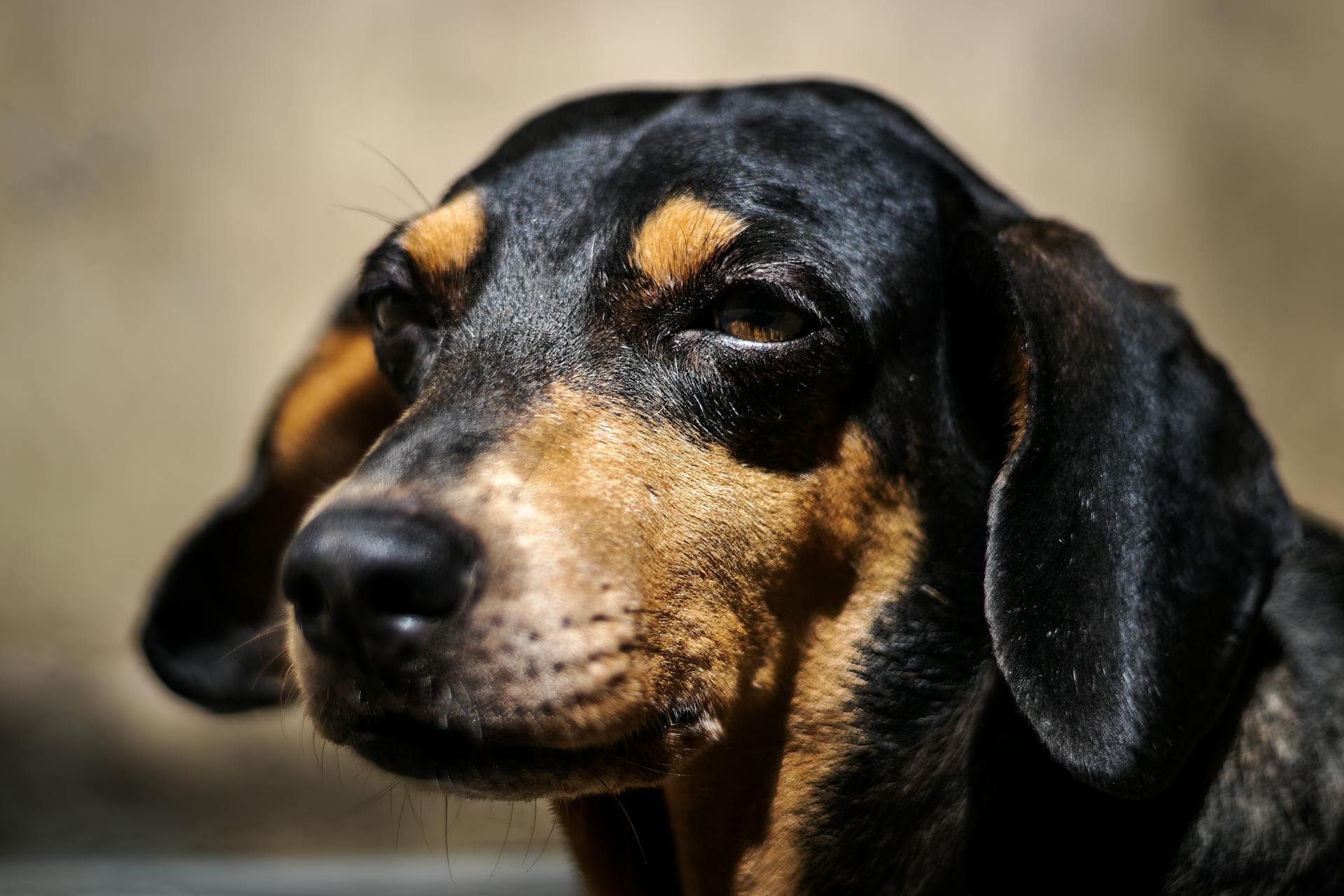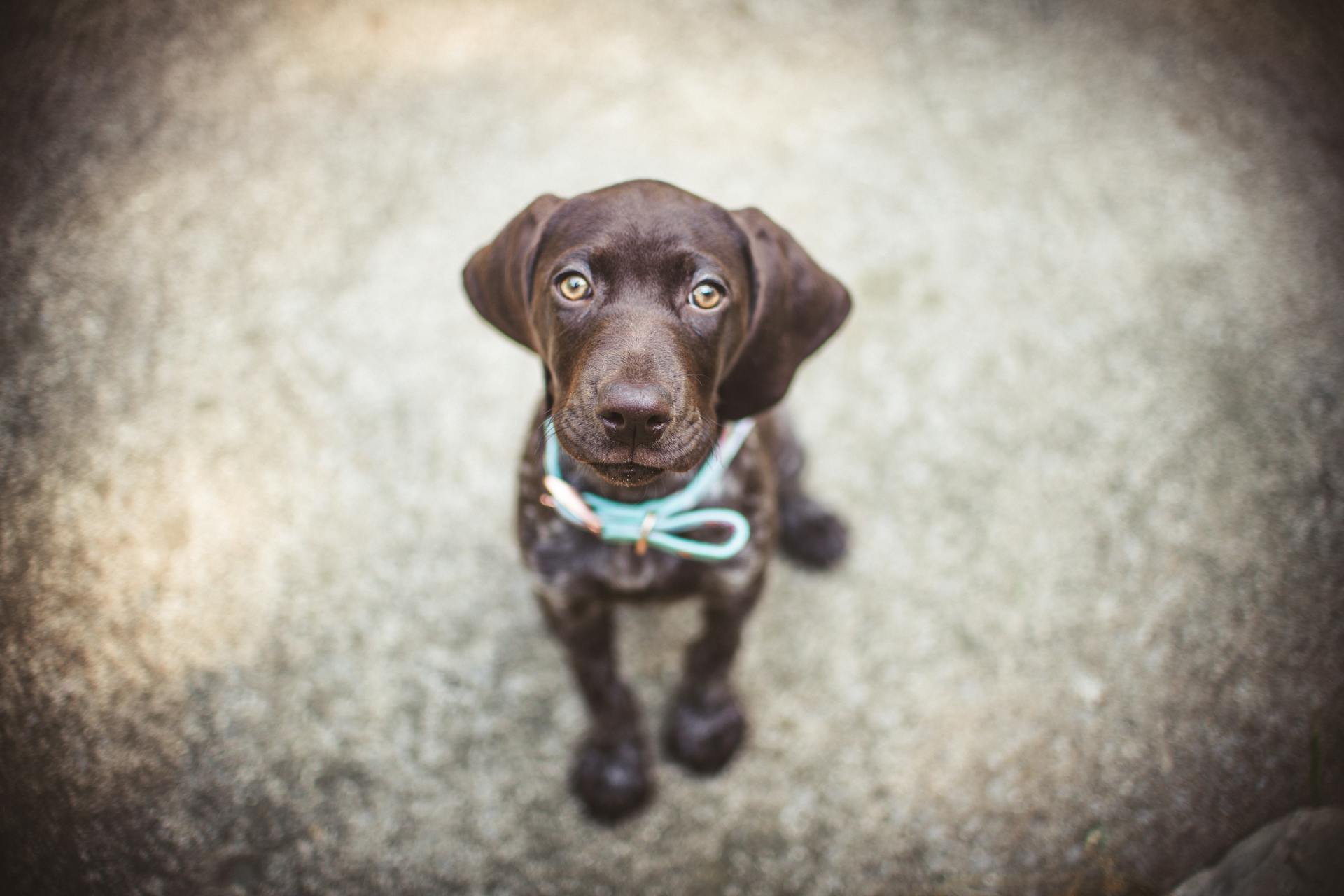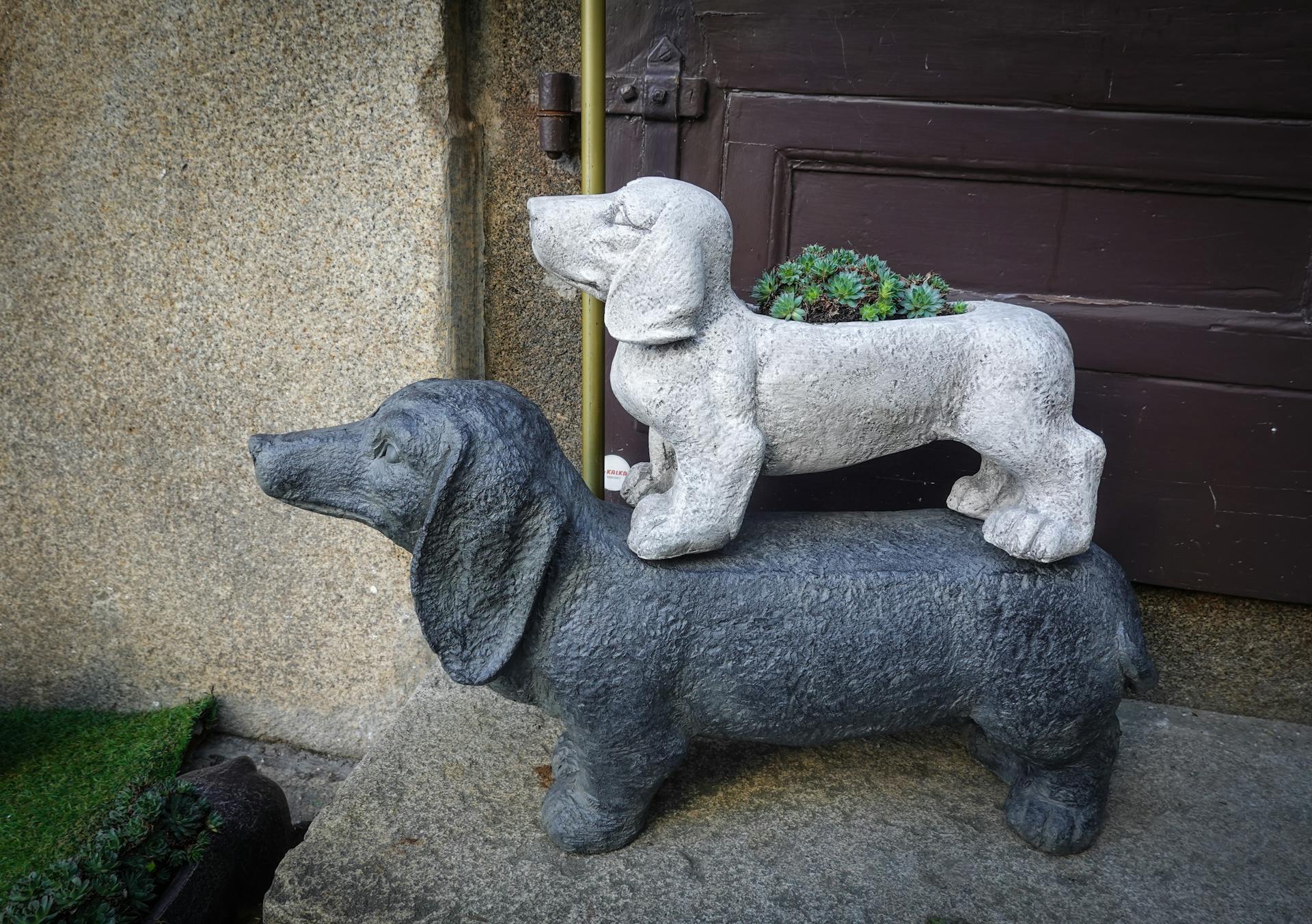
So you're considering bringing a dapple dachshund into your family? This adorable breed can make a wonderful pet, but it's essential to know what to expect before making the decision.
Dapple dachshunds are a type of dachshund that features a unique coat pattern, characterized by a mottled or dappled effect.
Their short stature and playful personalities make them perfect for families with smaller living spaces.
History of the Dachshund
The Dachshund breed has a rich history that spans over 600 years, with ancestors dating back to Germany where they were bred for their unique ability to dig into badger dens on hunts.
Their original purpose was to be bold, athletic, and clever enough to take on badgers, and they still retain these traits today.
The breeders continued to refine the Dachshund, producing different sizes to hunt different types of game, and various coat types and colors emerged in the late 1800s.
The American Kennel Club first recognized the breed in 1885, marking a significant milestone in the Dachshund's history.
Their popularity in the UK was boosted by Queen Victoria's fondness for the breed, which made them more appealing to the public.
The Dachshund's small size made it suitable for small living spaces, and they quickly became a favorite among many families.
Discover more: What Are Dachshunds
Earliest Historical Records
The earliest historical records of Dachshunds are a topic of debate among historians, but one thing is certain - the breed has a rich history that spans centuries. The American Kennel Club states that the Dachshund was bred in the 15th century.
There are different opinions on when Dachshunds were bred for hunting burrow-dwelling animals, but the Dachshund Club of America recognizes the breed dating back to the 18th or 19th century. This is a significant difference in opinion, but both dates agree that the breed has a long history.
The original Dachshunds were larger than modern standard Dachshunds and had longer legs, but they were selectively bred to emphasize the dwarfism that we see today. This selective breeding led to the development of various coat types and colors.
The dapple pattern, a distinctive feature of the Dachshund breed, is believed to have been introduced in the 16th century. This pattern is one of the recognized color patterns in the breed.
Dachshunds were bred to be bold, athletic, and clever, with a loud bark to help their humans track them as they hunted badgers. These traits have been passed down through the centuries, making the Dachshund a unique and lovable breed.
You might enjoy: Are Piebald Dachshunds Rare
Gained Popularity
Dachshunds gained popularity in the UK in 1840, thanks to their introduction by the Royal Family and Queen Victoria's fondness for the breed. They became a favorite among the public due to their small size, making them suitable for small living spaces.
The breed's popularity declined during World War I and World War II due to their German heritage. However, they regained their popularity quickly.
The late Queen Elizabeth kept a "Dorgi", a cross between a corgi and a Dachshund, showing the breed's enduring appeal.
Intriguing read: Service Dog Vest for Small Dogs
Dachshund Care
Mini dachshunds don't require an excessive amount of exercise, but they still need mental stimulation and physical activity each day.
Their grooming is fairly straightforward, depending on their coat type, and they should receive early and consistent training and socialization.
To maintain a Long-Haired Dapple Dachshund's coat looking wholesome and vivid, it's essential to brush their fur at least some instances every week with a slicker brush or a comb designed for lengthy-haired breeds.
Broaden your view: Red Dapple Long Haired Dachshund
They don't need unusual baths, but use a canine-particular shampoo when showering them, and avoid over-bathing to prevent stripping their coat of natural oils.
Regular walks on difficult surfaces can help wear down their nails, but it's still essential to check them every few weeks to prevent overgrowth.
Long-Haired Dachshunds are susceptible to ear infections due to their long, floppy ears, so be sure to test their ears frequently and clean them as needed with a vet-endorsed technique.
Grooming and Appearance
The Long-Haired Dapple Dachshund's coat is its crowning glory, with a silky texture and a mild wave that adds to its appeal. Their dapple pattern can range from dark to light hues, making each dog uniquely stunning.
The Long-Haired Dapple Dachshund's frame is long and muscular, with short legs that give them their signature "wiener dog" appearance. Their eyes often reflect the dapple pattern, and in some cases, they can have one or both blue eyes, adding to their special look.
Brushing is essential to prevent mats and tangles, especially around their ears and legs. A slicker brush or a comb designed for long-haired breeds works well to keep their coat clean and free of particles.
Here's a quick guide to grooming your Long-Haired Dapple Dachshund:
- Brush at least some times a week to prevent mats and tangles
- Bathe every month or two, or when they get particularly dirty
- Trim their nails every few weeks to prevent overgrowth
- Check their ears frequently and clean them as needed to prevent buildup
Their ears are long and floppy, making them susceptible to ear infections if moisture or dust gets trapped inside. Regular ear checks and cleaning can help prevent this.
Long-Haired Appearance
The Long-Haired Dapple Dachshund's appearance is truly one-of-a-kind, with a silky, lengthy coat that often has a mild wave to it.
Their dapple pattern can range broadly, but usually includes a mix of dark and light hues, such as black and silver, brown and cream, or crimson and lighter shades. This unique pattern makes every dog uniquely stunning.
The dachshund's lengthy frame and short legs are defining characteristics, giving them their signature "wiener dog" appearance. Despite their small stature, dachshunds are muscular and well-constructed, designed to dig and burrow easily.
Their eyes are another placing characteristic, frequently reflecting the dapple pattern. In some cases, a dapple dachshund may have one or both blue eyes, adding even more to their special look.
Their ears are long and floppy, framed by the same tender, flowing fur as the rest of their coat, which gives them an almost regal look.
Here's a quick rundown of the Long-Haired Dapple Dachshund's size:
Note that these are general size guidelines, and individual dogs may vary.
Long-Haired Pricing
You'll want to consider the breeder's reputation and the dog's pedigree when it comes to pricing. On average, a well-bred long-haired dapple dachshund can cost anywhere from $1,200 to $3,500.
Some dogs with excellent lineage or rare coat colors may even cost more. Investing in a high-quality, healthy dachshund is crucial for a happy, long-lasting companionship.
A Patch is Sufficient
A single patch on a Dapple Dachshund's coat is all it takes to qualify them as a Dapple Dachshund. Unless the coat is primarily white, which indicates a Double Dapple dog.
The pattern potential of a Dapple Dachshund's coat is virtually endless, with no two dogs alike.
Training and Behavior
Training a dachshund requires patience and consistency. They are smart dogs, but can be stubborn and independent, making training a challenge.
Start training and socialization early, as young as possible. Dachshunds respond well to positive-reinforcement methods, such as treats, and harsh corrections can cause them to shut down and refuse to learn.
To avoid distractions, training sessions should be short and fun, with plenty of rewards and praise. Dachshunds are scent hounds and love to chase prey, so good recall and lead training from an early age is recommended.
Here are some tips for successful training sessions:
- Keep training sessions short and fun
- Use positive-reinforcement methods, such as treats and praise
- Introduce new commands and socialization gradually
- Be consistent and patient
Regular exercise and mental stimulation are also crucial to prevent destructive behaviors in dachshunds. A 60-minute walk and regular playtime should be a good starting point for adult dachshunds.
For more insights, see: Do Dachshunds Get along with Other Dogs
Training & Exercise
Training your Dachshund requires patience and persistence. They can be independent and stubborn, making training a challenge.
To start, begin training and socialization as early as possible. This will help your Dachshund grow into a well-adjusted and confident dog.
Here's an interesting read: All about Dogs Dog Training
Dachshunds respond well to positive-reinforcement methods, such as treats. Harsh corrections can cause them to shut down and refuse to learn.
In addition to obedience training, expose your Dachshund to different people and other dogs from an early age. This will help boost their comfort and confidence.
Consistency and persistence are key to training success with this breed. Positive reinforcement is essential to help them learn and grow.
Training sessions may be more successful in short bursts, as Dachshunds can be easily distracted. This is especially true if they see something they perceive as prey that they want to chase.
To keep your Dachshund physically and mentally stimulated, provide them with plenty of exercise and playtime. Regular walks and playtime can help prevent destructive behaviors from creeping in.
A 60-minute walk is a good starting point for adult Dachshunds, combined with regular playtime. Try to avoid letting them run up or downstairs and jump up a lot, as this can cause back problems.
Games like hide and seek can be a fun way to provide mental stimulation and exercise. Hide their favorite toy and let them sniff it out.
Heterochromia
Heterochromia is a condition where a dog has two different colors in one eye or two different colored eyes. Dapple Dachshunds are more likely to have heterochromia.
Eye coloration in dogs with merle patterns can be uneven, with mixed shades of amber, blue, and green appearing in varying depths. This can result in two completely different eye colors, such as one brown and the other a vivid blue.
Check this out: Blue Dapple Dachshund
Frequently Asked Questions
How much is a dapple dachshund worth?
A dapple dachshund's price ranges from $1700 for males to $1900 for females. Learn more about the costs and benefits of owning a dapple dachshund.
Is a dapple dachshund rare?
No, dapple dachshunds are not rare, as they have been a recognized color variety since the 19th century. In fact, they've been mentioned in the first pedigree books of the German Dachshund Club since its founding in 1888.
How big do dapple Dachshunds get?
Dapple Dachshunds typically weigh between 16-32 pounds and stand 8-9 inches tall. They come in two sizes: standard and miniature, with the miniature variety being significantly smaller.
Are dapple Dachshunds less healthy?
Dapple Dachshunds can be prone to vision and hearing issues due to a genetic combination that can cause blindness and deafness. However, single Dapple Dachshunds are generally not affected by these health problems
What do you call a dapple dachshund?
A dapple dachshund is a dachshund with a coat featuring irregularly formed patches of lightened color. This unique coat pattern is a result of the breed's genetic makeup.
Featured Images: pexels.com


